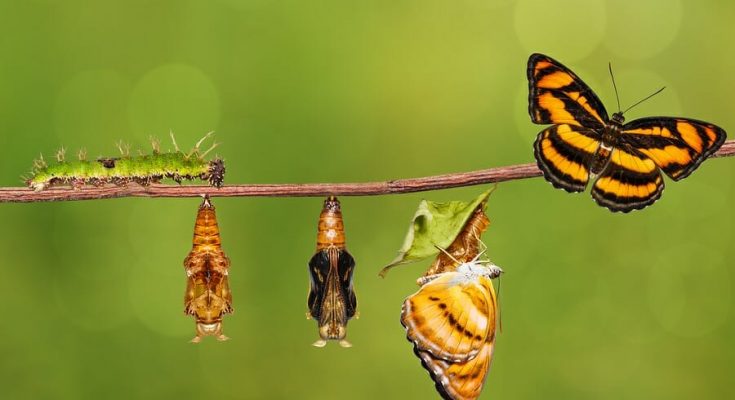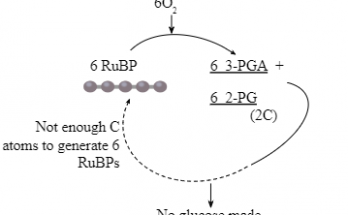Metamorphosis
Metamorphosis is the process of transformation or change that is used to describe the physical transformation of some organism from one stage of development to another. These changes can be in the body shape, growth of wings, the development of new body structures or size of an organism. It also changes the behavior and function of the organism. Metamorphosis process occurs in insects such as butterflies and beetles but can also occur in other organisms like amphibians, fish and mammals.
Table of Contents
4 Important Types of Metamorphosis
Types of Metamorphosis are classified depending on the type of changes that occur in the organism during the transformation.
4 Important types of Metamorphosis are as follows
- Complete Metamorphosis(Holometabolous)
- Incomplete Metamorphosis (Hemimetabolous)
- Direct Development
- Gradual Metamorphosis
Complete Metamorphosis(Holometabolous)-
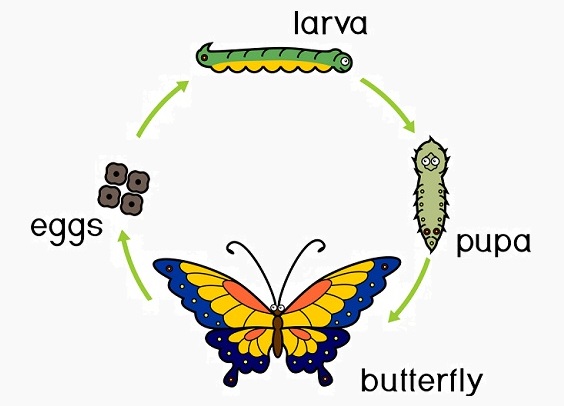
- In complete metamorphosis there are four distinct stages – Egg, Larva, Pupa and Adult. Insects such as butterflies and beetles are examples of complete metamorphosis.
- In complete metamorphosis the egg stage is the dormant state of the insect and it begins to develop once fertilized.
- In the larva stage the insect hatches and begins to feed and grow. pupa stage is a non-feeding stage where the insect undergoes a transformation into the adult form.
- In the adult stage, the insect is fully formed and able to reproduce.
Incomplete Metamorphosis (Hemimetabolous)
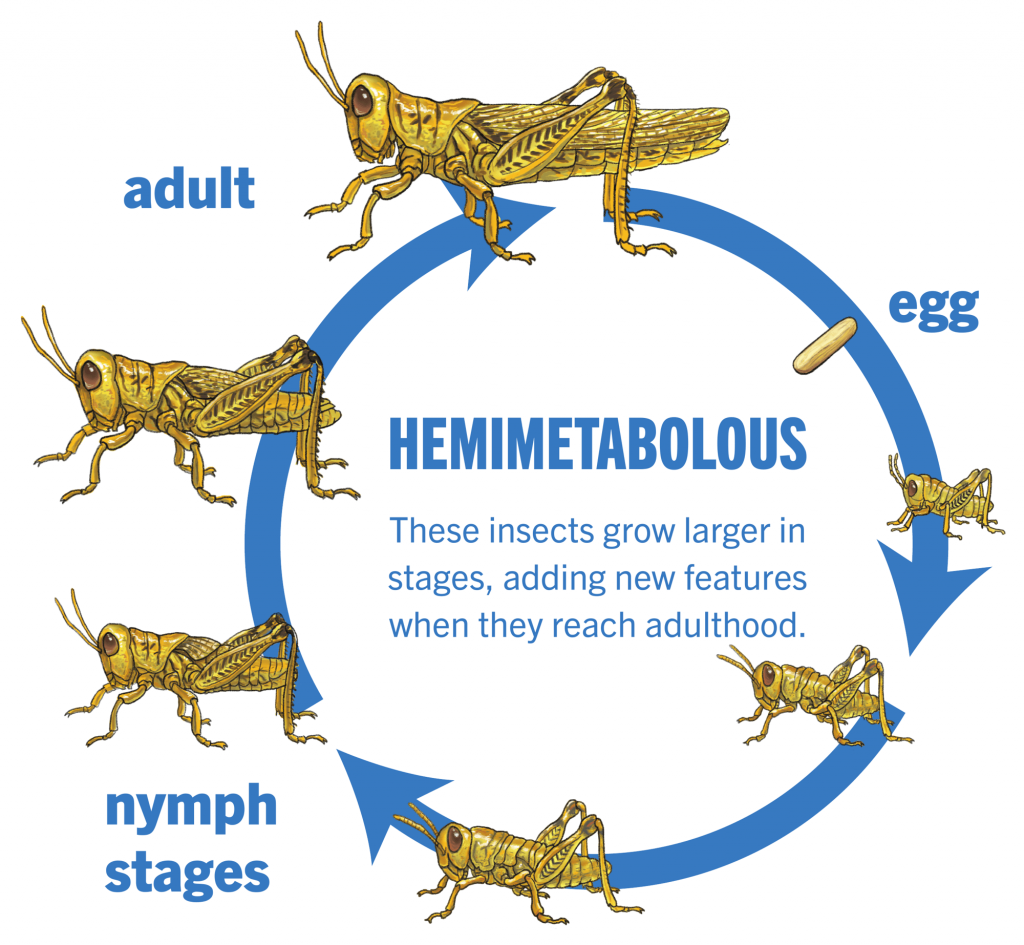
- Incomplete Metamorphosis is also known as hemimetabolism.
- Incomplete Metamorphosis has three stages – Egg, Nymph and Adult.
- Insects such as grasshoppers, cockroaches and termites go through incomplete metamorphosis.
- In the egg stage of Metamorphosis the insect is in a dormant state and begins to develop once fertilized.
- The nymph stage of Metamorphosis is when the insect hatches and begins to feed and grow. As The nymph grows it goes through a series of molts until it reaches the adult stage.
- In Incomplete Metamorphosis the nymph looks like a smaller version of the adult . they also have functional wings
- There is no pupa stage in Incomplete Metamorphosis
Direct Development

- This type of metamorphosis is characterized by the absence of a larva or pupa stage.
- Insects such as Mayflies and Stoneflies go through direct development type of Metamorphosis.
- In the Direct Development type of Metamorphosis in the egg stage the insect is in a dormant state and begins to develop once fertilized.
- Nymph hatches and begins to feed and grow and it goes through a series of molts until it reaches the adult stage.
- In the Direct Development type of Metamorphosis the nymph does not resemble the adult form
- The adult emerges directly from the nymph in this type of Metamorphosis.
Gradual Metamorphosis
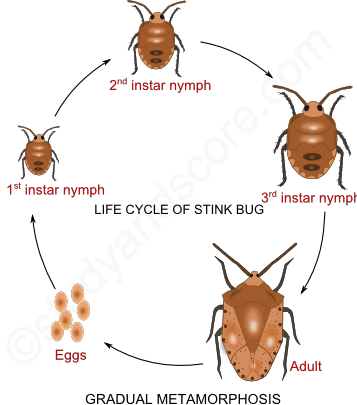
- In Gradual Metamorphosis gradual transition takes place from the immature form to the adult form.
- Insects like dragonflies and damselflies go through Gradual Metamorphosis.
- In Gradual Metamorphosis the nymph hatches and begins to feed and growand it goes through a series of molts until it reaches the adult stage.
- In Gradual Metamorphosis the adult form emerges gradually and the nymph and adult look similar but have distinct differences, such as wings and reproductive organs.
Similarities and Differences between Metamorphosis in Insects and other Animals
Similarities between Insects and other Animals Metamorphosis
- Both Insects and Amphibians go through metamorphosis as they develop from immature stages to adults.
- Both Insects and Amphibians go through a series of developmental stages like Egg, Larva, Pupa / Cocoon / Tadpole and Adult.
- Both Insects and Amphibians go through a change in Body shape, Size and structure during metamorphosis.
Differences Between Insects and other Animals Metamorphosis
The type of metamorphosis that occurs in Insects and other Animals has differences in the process which is as follows-
- In Insects complete metamorphosis takes place .It has 4 stages: – Egg, Larva, pupa and Adult. In Amphibians incomplete metamorphosis takes place which involves three stages: – Egg, Tadpole and Adult. In moths metamorphosis is different from both insects and amphibians. Moth undergoes complete metamorphosis, with four stages i.e. egg, larva, pupa and adult.
- The environment and conditions that are required for metamorphosis are different for insects, amphibians and moths. For example in insects the metamorphosis is often triggered by changes in temperature, light or food availability.In amphibians the metamorphosis is often triggered by changes in water levels or the availability of food.
- The changes that occur during metamorphosis are different for insects, amphibians and moths. For example Insects undergo changes in body shape, size and structure while amphibians and moths undergo less changes.
- The duration of metamorphosis is different for insects, amphibians and moths. For example In insects the metamorphosis can take several weeks or monthswhile In the amphibians metamorphosis takes several weeks or months and the metamorphosis of moths can take several days.
Physical and Behavioral changes during Metamorphosis
Metamorphosis is a complex process that shows the significant physical and behavioral changes in organisms. These changes allow the organism to adapt to their environment and survive in different conditions.The physical and behavioral changes that occur during metamorphosis depends on the species of organism undergoing the Metamorphosis. The common changes which occurs during metamorphosis are as follows-
- Development of wings
Insects, such as butterflies and moths undergo metamorphosis in order to develop wings.
- Transformation from a larva to a pupa
Insects such as butterflies and moths start with the larva stage. Larva is a worm-like creature. In metamorphosis the larva transforms into a pupa which is a non-moving protective stage where the insect undergoes its final development.
- Change in body shape and size
Organisms like frogs and salamanders undergo metamorphosis and change the body shape and size. Example – Tadpoles transform into adult frogs which have legs and have a different body shape.
- Changes in behavior
Organisms like frogs and salamanders undergo changes in behavior during metamorphosis. Example – tadpoles are aquatic and eat algae while adult frogs are terrestrial and eat insects.
- Change in color
Organisms like butterflies and moths undergo change in color during metamorphosis. Example – Caterpillars of a monarch butterfly are green and brown but the adult butterfly is orange and black.
7 Important Factors Affecting the process of Metamorphosis
- Temperature
Temperature plays an important role in the metamorphosis process of many organisms including insects and amphibians. High temperatures can increase the rate of development of larvae and low temperatures can slow it down. For Example – Warm temperature leads to the faster development of frog tadpoles into Adult frogs but the cold temperature can delay the process.
- Food availability
Food availability also plays an important role in the metamorphosis process. Lack of food can slow down the development of larvae and delay Metamorphosis while an abundance of food can accelerate it. For example- Caterpillars that have access to a large amount of leaves will grow and develop faster than those with limited access to food.
- Light
Light also affects the time of metamorphosis. For Example- Some amphibians like salamanders will go into metamorphosis if they are exposed to certain wavelengths of light.
- Humidity
Humidity is also an important factor for metamorphosis. Organisms require specific humidity for their development. For Example – If humidity is too low amphibian eggs may dry out and fail to hatch and if the humidity is too high the eggs may become waterlogged and also fail to hatch.
- Water quality –
Quality of water is also an important factor for Metamorphosis, Aquatic Organisms require specific water conditions for their development. For Example – Amphibian eggs and tadpoles require clean and oxygen-rich water to survive and develop.
- Predation
Predation also affects metamorphosis as many Organisms Slow down or increase their development depending on the presence or absence of Predators. For Example some Organisms will develop faster to reach a size where they are less vulnerable to predation.
- Competition for resources
Competition for resources also affects the metamorphosis as individuals may Slow down or increase their development to avoid competition with other organisms .
Importance of Metamorphosis as a model system for studying Developmental Biology and Genetics.
- Metamorphosis is the process of change from one developmental stage to another and that’s why it is a powerful model system for studying developmental biology and genetics. Reason is metamorphosis is a well-defined easily observable and genetically tractable process that occurs in a wide range of organisms.
- In metamorphosis organisms undergo drastic changes in body shape, size and function. it is controlled by the activation and repression of specific genes. By studying the genetic and molecular mechanisms that control metamorphosis researchers can gain insights into how development is regulated at the cellular and molecular level. For example – In insects metamorphosis is controlled by hormones. Ecdysone is one of the hormones which triggers the expression of genes that control cell proliferation and differentiation. By studying the genes that are activated during metamorphosis researchers have been able to identify key signaling pa thways and transcription factors that are important for developmental processe such as cell proliferation and differentiation.
- In Amphibians metamorphosis is controlled by thyroid hormones . Thyroid hormones activate genes that control the development of new structures such as the lungs and the degeneration of existing structures, such as the gills. By studying the genetic and molecular mechanisms that control metamorphosis in amphibians researchers have been able to identify key signaling pathways and transcription factors that are important for developmental processes such as organ development and tissue remodeling.
- Study of metamorphosis provides insights into developmental biology,evolutionary biology and medicine. For Example- By studying the genetic and molecular mechanisms that control metamorphosis researchers can get insights into how organisms have evolved to adapt to different environments and how these mechanisms might be disrupted in disease states.
Importance of Metamorphosis for the survival and Reproduction of Insects.
Metamorphosis plays a vital role in their survival and reproduction.
- Metamorphosis allows insects to adapt to different environments as they grow and develop. Example- Caterpillars are adapted to living and feeding on leaves while an adult butterfly is adapted to flying and gathering nectar from flowers. Because of metamorphosis insects would be limited to one stage of life and would be unable to survive in different environments.
- Metamorphosis plays a crucial role in Reproduction. Many Insects such as Butterflies and Moths have distinct male and females that can able to reproduce in their adult stage. Because of Metamorphosis these insects would not be able to reproduce and their populations would eventually decline.
- Metamorphosis also allows insects to avoid predators. Example- Caterpillars are vulnerable to predators as they are slow-moving and easy to spot. But once it transforms into a butterfly it becomes faster and more agile making it more difficult for predators to catch.
Ecological and Evolutionary Significance of Metamorphosis.
Metamorphosis plays an important role in the ecology and evolution of many organisms.
Ecological Significance of Metamorphosis
Metamorphosis plays an important role in the survival and reproduction of many species. Example- in Insects such as Butterflies and moths the adult stage is specialized for reproduction and dispersal while in the larva stage it is specialized for feeding and growth. This division of labor allows for greater efficiency in resource use as the larvae can focus on growth and the adults can focus on reproduction. Metamorphosis can also play a role in adaptation to different environments. Example – Aquatic organisms such as amphibians, undergo metamorphosis to adapt to life on land. This allows them to take advantage of new resources and avoid predation in the terrestrial environment.
Evolutionary Significance of Metamorphosis
Metamorphosis is thought to have originated as a way for organisms to adapt to different environments and ecological niches. Example, the evolution of metamorphosis in insects allowed them to take advantage of new food sources and to escape from predators. Over the period of time metamorphosis has become an important tool for organisms to survive and thrive in a variety of different environments.
What is the role of hormones in triggering and regulating the metamorphosis process?
Hormones play a vital role in the metamorphosis process by activating and regulating the various physiological and developmental changes that occur during the process. Without the proper coordination of hormones the metamorphosis process would not be able to occur effectively.
Roles of Hormones in various organisms is as follows –
Role of Hormone in Metamorphosis- Insects
In insects Ecdysone is the primary hormone responsible for activating the metamorphosis process. Ecdysone is produced by the prothoracic glands and is released in pulses which signal the insect to molt and progress through the different stages of development. Ecdysone pulse also activates the formation of the pupal cuticle which eventually hardens to form the adult exoskeleton.
Role of Hormone in Metamorphosis – Amphibians
In Amphibians Thyroxine hormone is responsible for activating the metamorphosis process. Thyroxine is produced by the thyroid gland and is released into the bloodstream where it travels to the amphibian’s skin and causes the release of other hormones that activates the Metamorphosis process.
Role of Hormone in Metamorphosis- Mammals
In mammals Estrogen and Testosterone hormones play a key role in the Metamorphosis process. These hormones are responsible for the development of secondary sexual characteristics such as the development of breasts in females and the growth of facial hair in males.
Did you find this article helpful? We’d love to hear your thoughts and suggestions in the comments!
Curious Questions on Metamorphosis
What exactly is metamorphosis?
Metamorphosis is a process of transformation where an organism undergoes significant physical and sometimes behavioural changes from one developmental stage to another, often involving changes in shape, size, and function.
What are the main types of metamorphosis in insects?
The main types of metamorphosis in insects are complete metamorphosis (holometabolous) and incomplete metamorphosis (hemimetabolous).
Why do some insects undergo complete metamorphosis?
Complete metamorphosis allows insects to exploit different environments and resources in each life stage, reducing competition between young and adult forms and increasing survival rates.
How does incomplete metamorphosis differ from complete metamorphosis?
Incomplete metamorphosis involves three stages (egg, nymph, and adult), where the nymph gradually resembles the adult. Complete metamorphosis has four distinct stages (egg, larva, pupa, and adult), with the larva and adult often drastically different.
What are the advantages of metamorphosis for insects?
Metamorphosis allows insects to optimise survival and reproduction by adapting to different life stages, avoiding predators, and exploiting diverse resources.
Can metamorphosis occur in other animals besides insects and amphibians?
While it’s most common in insects and amphibians, certain fish and marine creatures also undergo forms of metamorphosis during their life cycles.
How does the environment influence the process of metamorphosis?
Environmental factors like temperature, food availability, light, and humidity can significantly affect the rate and timing of metamorphosis.
What role do hormones play in metamorphosis?
Hormones regulate the physiological and developmental changes during metamorphosis. In insects, hormones like ecdysone trigger moulting and progression through stages.
How do organisms survive during the dramatic changes of metamorphosis?
Organisms have evolved specific strategies to survive during metamorphosis, like the protective pupal stage in insects, where they are vulnerable but protected.
What happens to the organism’s organs and tissues during metamorphosis?
Organs and tissues may dramatically reorganise, develop, or degenerate to suit the needs of the next life stage, like the reabsorption of the tadpole’s tail during frog metamorphosis.
Why do some species skip certain stages in metamorphosis?
Skipping stages (like direct development) can be an adaptation to specific environmental conditions or life history strategies of the species.
How do predators affect the metamorphosis process?
The presence of predators can influence the timing and speed of metamorphosis, with some species speeding up development to reach a less vulnerable adult stage more quickly.
Is the colour change during metamorphosis significant?
Colour changes can signify different life stages, camouflage, or readiness to mate and often play a crucial role in survival and reproductive strategies.
Do all insects go through the same stages during metamorphosis?
No, the stages can vary significantly between species, especially between those undergoing complete and incomplete metamorphosis.
How do temperature and food supply affect metamorphosis?
Higher temperatures typically speed up development, and adequate food supply is crucial for the energy-intensive process of metamorphosis.
What is the evolutionary advantage of metamorphosis?
Metamorphosis provides evolutionary advantages by allowing species to exploit different niches and resources at various life stages, reducing intraspecific competition and enhancing survival and reproduction.
Can metamorphosis be reversed or paused?
Typically, metamorphosis is a one-way process and can’t be reversed. However, some species can pause development (diapause) under unfavourable conditions.
